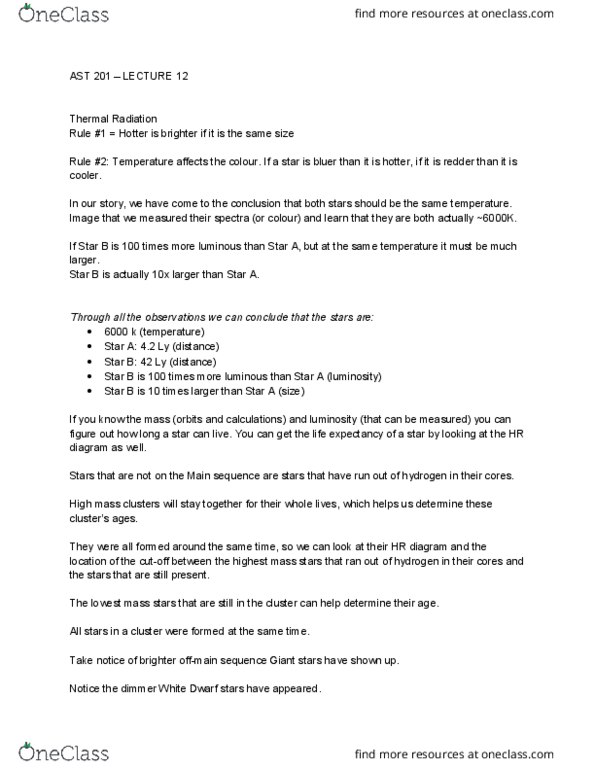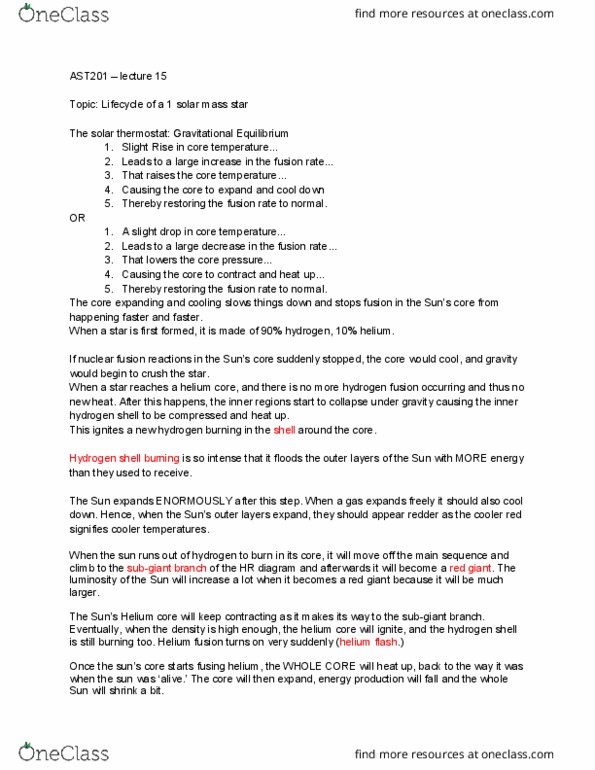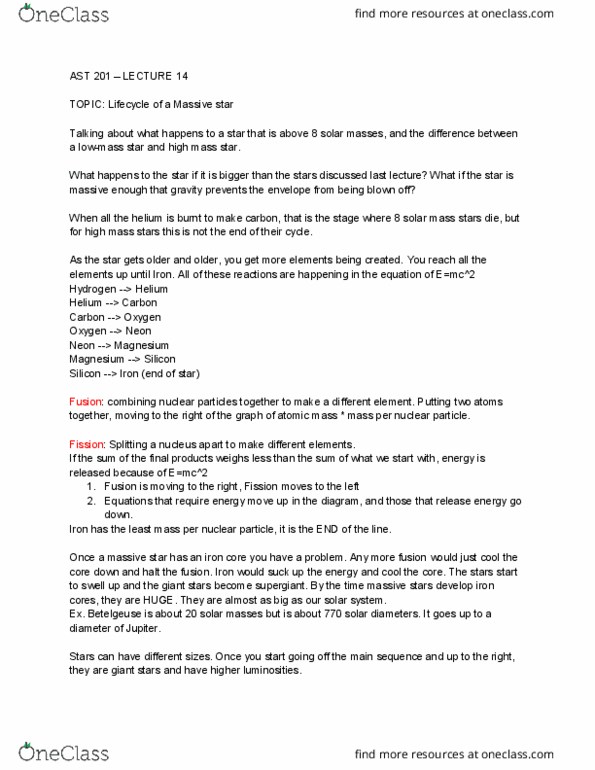AST201H1 Lecture Notes - Lecture 15: Main Sequence, Horizontal Branch, Triple-Alpha Process
AST201H1 verified notes
15/24View all
Document Summary
Topic: lifecycle of a 1 solar mass star. The core expanding and cooling slows things down and stops fusion in the sun"s core from happening faster and faster. When a star is first formed, it is made of 90% hydrogen, 10% helium. If nuclear fusion reactions in the sun"s core suddenly stopped, the core would cool, and gravity would begin to crush the star. When a star reaches a helium core, and there is no more hydrogen fusion occurring and thus no new heat. After this happens, the inner regions start to collapse under gravity causing the inner hydrogen shell to be compressed and heat up. This ignites a new hydrogen burning in the shell around the core. Hydrogen shell burning is so intense that it floods the outer layers of the sun with more energy than they used to receive. When a gas expands freely it should also cool down.





